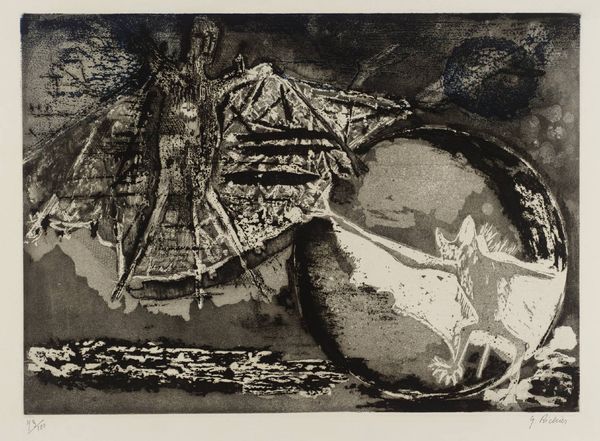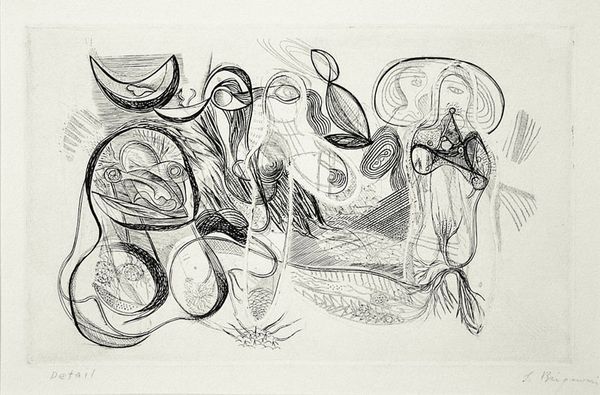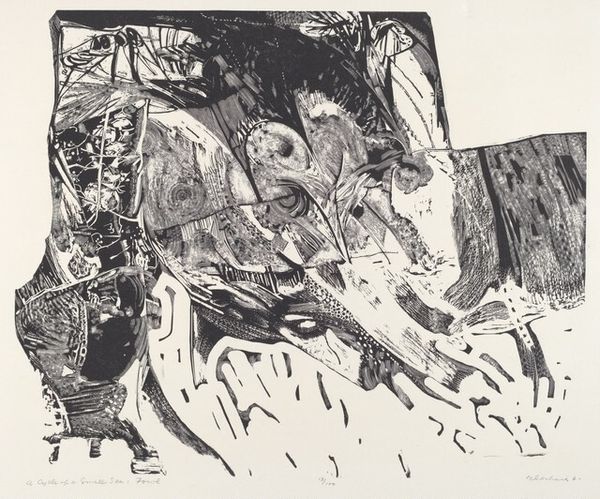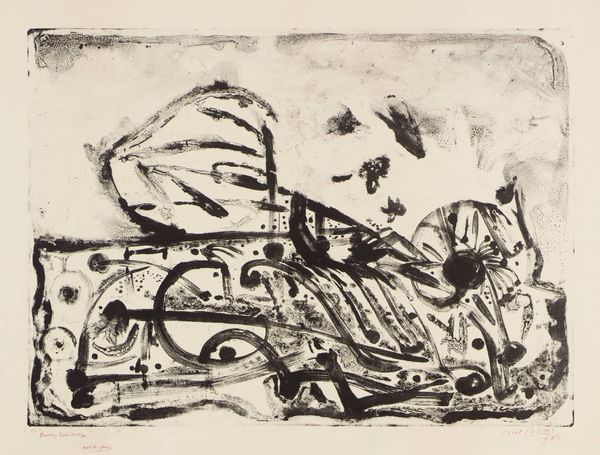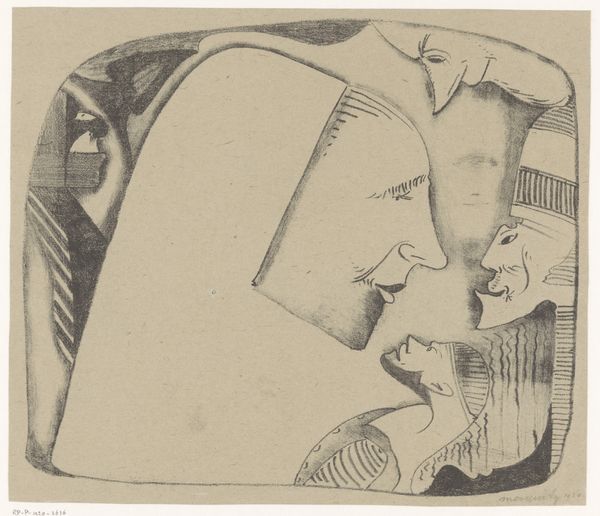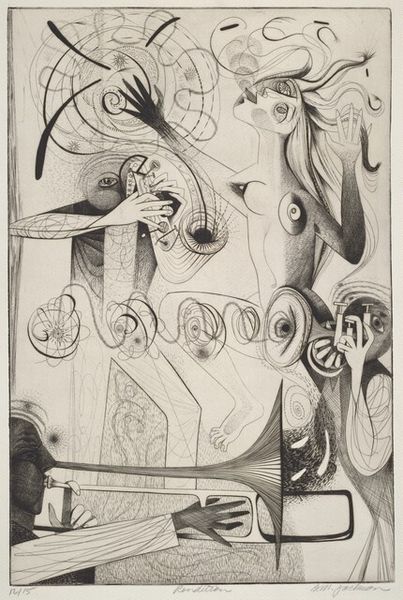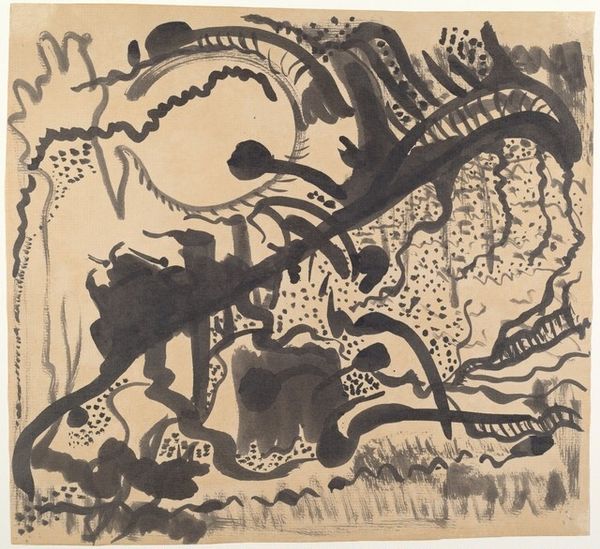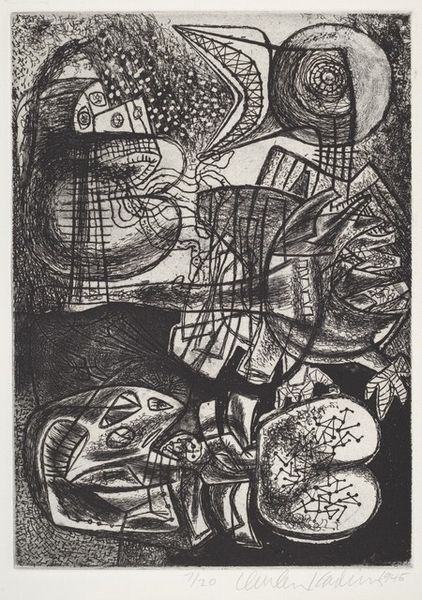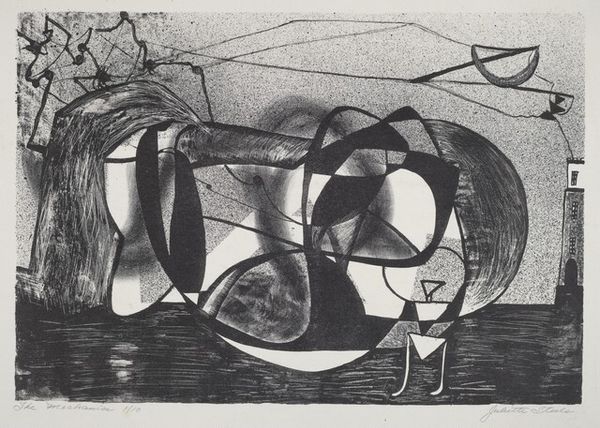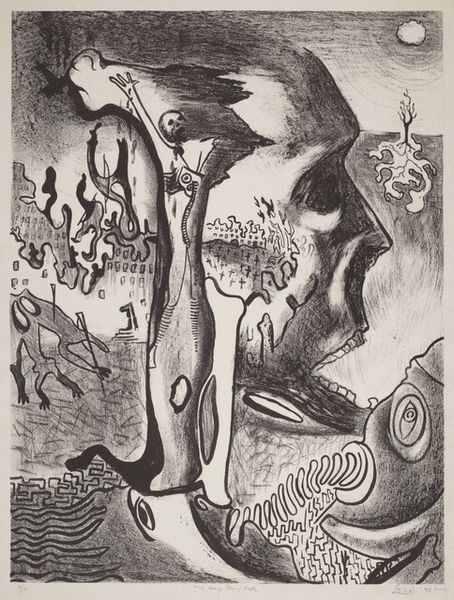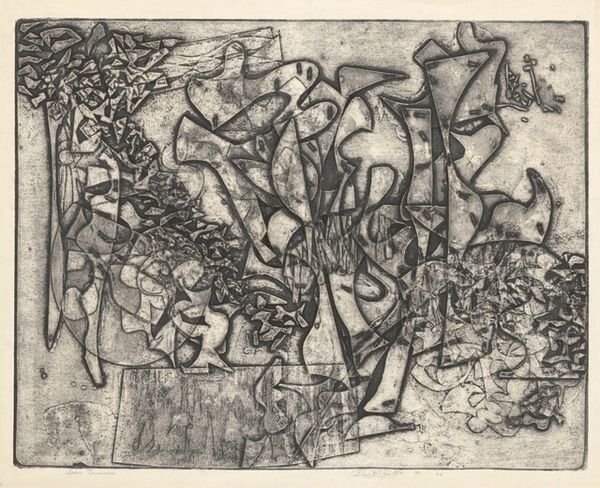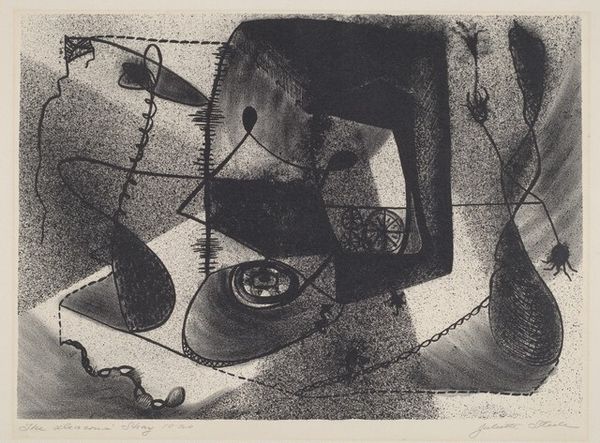
Dimensions: sheet: 48.5 × 64.8 cm (19 1/8 × 25 1/2 in.)
Copyright: National Gallery of Art: CC0 1.0
Curator: Oh, it's Altenbourg’s "Lebensbaum (Tree of Life)," created in 1950. It's an ink drawing, although you can see it exists as a print too. What springs to mind when you look at it? Editor: Chaotic, but controlled. It feels like peering into the subconscious—lots of swirling imagery. The tree trunk seems central, but then everything branches out, fighting for attention. Curator: Yes! Altenbourg really excelled at controlled chaos. He was wrestling with the aftermath of the Second World War at this point. The “Tree of Life” is a deeply symbolic image, and in Altenbourg's hands, it becomes a space to hold both hope and fragmentation. What kind of imagery do you detect in this drawing? Editor: I see fractured figures, almost like shattered icons—hinting at some deep personal and cultural anxieties of the time, and perhaps reflecting the loss of stability after the war. Is that a mandolin near the base? Or perhaps a lute? It could point to harmony... disrupted. Curator: Exactly. That juxtaposition is very Altenbourg. He's working within the German Expressionist tradition, so figuration is present, but twisted, broken down into its component parts and then reconstructed. He was interested in alchemy and mythology. He explored personal anxieties through a broader, historical lens. Editor: And how! You can sense it; a weight of tradition combined with this urgent need to tear it all apart. All the marks have such distinct textures. Look at that heavy ink wash, creating those amorphous shapes around what may be symbolic fruits at the apex. Almost dreamlike, really. What can you say about that use of figuration? Curator: The figures are archetypal, yet so personalized that you sense they’re reflecting internal emotional states of the artist and, perhaps, the collective unconscious. It’s about the struggle to find meaning, rebuild, and grow amidst the ruins, not to give us easy answers. I think the raw, almost violent energy of the ink embodies that struggle. Editor: I think you are right! The composition and iconography pull us into this complex emotional and cultural landscape, reminding us of resilience amidst fractured realities. Altenbourg doesn't offer a solution to our modern anxieties, but at least gives it to us straight. Curator: Absolutely. After all, who wants art to spoon-feed you simplistic tropes of resolution? Instead, we see an unflinching and honest picture of post-war realities.
Comments
No comments
Be the first to comment and join the conversation on the ultimate creative platform.
